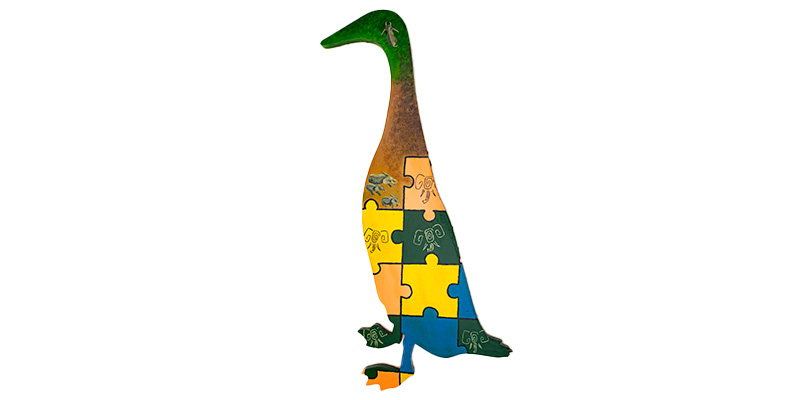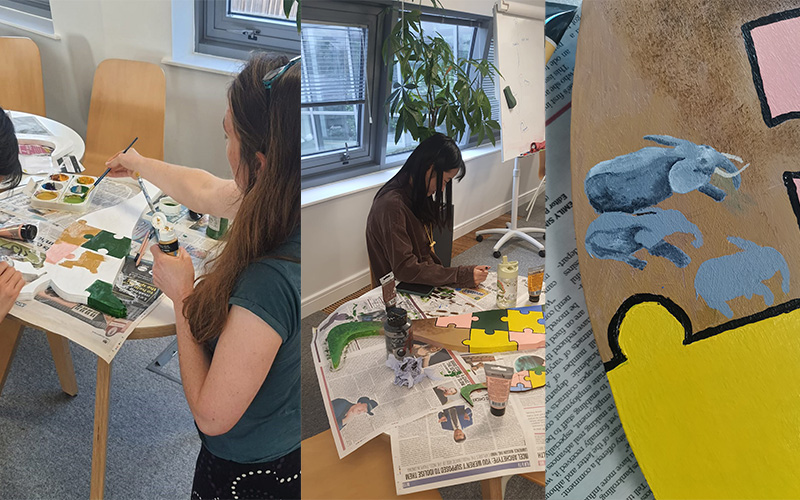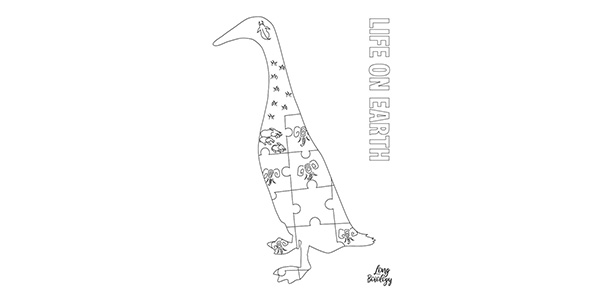
Life on Earth
This duck was created by Shuyu Deng and Helen Mylne.
With the jazz music on and snacks on hand, we spent several evenings in the office getting creative with the acrylic paint. Our design evolved as we went along, adding brighter colours and improving the links between our two projects to highlight the interdisciplinary nature of the Leverhulme Centre for Anthropocene Biodiversity.
Our duck combines the research associated with our respective PhDs.

Shuyu investigates the effects of changing land use types on species distribution over time. Using data from real landscapes, Shuyu studies how species have been lost and gained in different areas as the land use changes. She then produces a conceptual land using 'jigsaw' to predict how hypothetical land use changes might lead to species distribution changes in the future.
Helen researches the social lives of male African savanna elephants. Behaviours such as crop-foraging can spread quickly through an elephant population, as their social network facilitates social learning opportunities. Using observations of elephants spanning up to 50 years from three different populations, Helen is constructing the social networks of these animals to assess whether age alters how popular an individual is.
This can be used to highlight the pathways by which behaviours such as crop-foraging may spread. This may be used in future work to aid conservation efforts for the protection of elephants and the communities who share the landscape in which they live.
Study with us
Students studying biology at York go on an adventure through time and space, from the conditions that made life possible to the global challenges of food, disease and climate change that face us all in the present.
Make your own duck
Didn't get the chance to attend the Art Trail Festival of Ideas workshop?
You can still colour your own life on earth duck and make it your own.
